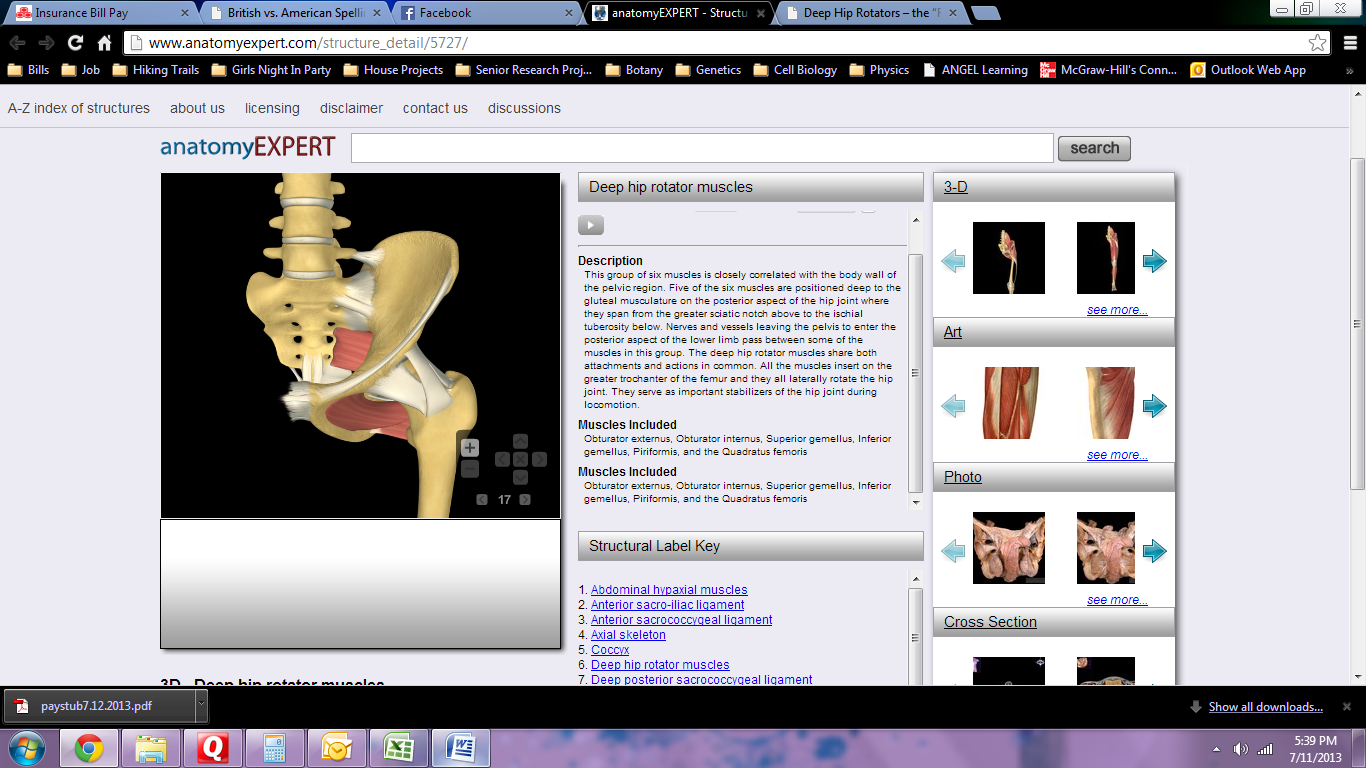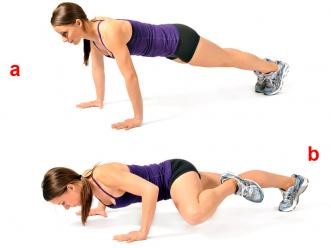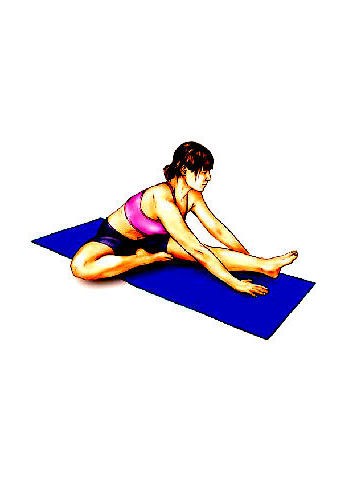
General information
Long rotators are a group of six skeletal muscles found within the pelvic region.
Literal meaning
Obturator externus – to stop up outward
Obturator internus – to stop up within
Superior gemellus – the upper little twin
Inferior gemellus – the lower little twin
Piriformis – pear shaped
Quadratus femoris – square thigh
Interesting information
The long rotators, or the deep hip rotator muscles, are responsible for stabilising the hip during movement. Several of these muscles perform similar actions and attachments. Muscles included in this group are obturator externus, obturator internus, superior gemellus, inferior gemellus, piriformis, and the quadratus femoris.
One of the most common injuries amongst athletes are hip injuries. Hip bursitis can occur when the bursae, small sacs of lubricating fluid in between the joints, is irritated. This can cause pain in the joint and the deep muscles of the hip. Inflammation can be caused by a number of factors including scoliosis, arthritis, or bone spurs. Treatments include ice, taking an analgesic, and limited movement of that area.
Origin
Obturator externus - lateral surface of the obturator membrane and the ischiopubic ramus.
Obturator internus – medial surface of obturator membrane and surrounding bone.
Superior gemellus – ischial spine.
Inferior gemellus – superior the tuberosity of the ischium.
Piriformis – anterior of sacrum between and laterally to the anterior sacral foramina.
Quadratus femoris – lateral edge of the tuberosity of the ischium.
Insertion
Obturator externus–trochanteric fossa.
Obturator internus –medial surface of greater trochanter.
Superior gemellus –upper edge of piriformis muscles tendon.
Inferior gemellus –lower edge of piriformis muscles tendon.
Piriformis –superior boundary of greater trochanter.
Quadratus femoris –intertrochanteric crest.
Function
Stabilise the hip during movement.
Nerve supply
Obturator externus–L3-4.
Obturator internus –L5, S1.
Superior gemellus – L4-5, S1.
Inferior gemellus –L5, S1.
Piriformis –L5, S1-2.
Quadratus femoris –L4-S1.
Blood supply
Inferior and superior gluteal arteries.

Relevant research
Learning about how hips carry and transfer the load of body weight may help to unravel the unknown about the development of osteoarthritis. Lateral rotator muscles seem to have an effect on how contact pressure is distributed throughout the body. This could lead to other viable therapies for osteoarthritic hips.
Weißgraeber, P, Wall, H, Khabbazeh, S, Kroker, A, Becker, W. (2012). “Effect of the lateral rotators on load transfer in the human hip joint revealed by mechanical analysis”. Annals of Anatomy – AnatomischerAnzeiger. 194(5): 461-466.
Long rotator exercises

Hip rotation in push-up position
Begin in a push-up position with feet placed shoulder-width apart. Slowly bring the left knee toward the left shoulder. Hold for 10 seconds then return to starting position. Repeat on the right side. This exercise will help with isolating the muscles involved in hip rotation and core abdominal muscles.

External Hip Rotator Stretches
Sit on the floor with a straight back and one leg extended out in front. Place the bottom of one foot onto the thigh of the extended leg. Move the foot as close to the groin as possible. Lean forward, placing hands on either side of the leg. Repeat this procedure on the other side.
Sign Up
Sign up for your free trial now!
Get started with Rehab My Patient today and revolutionize your exercise prescription process for effective rehabilitation.
Start Your 14-Day Free Trial